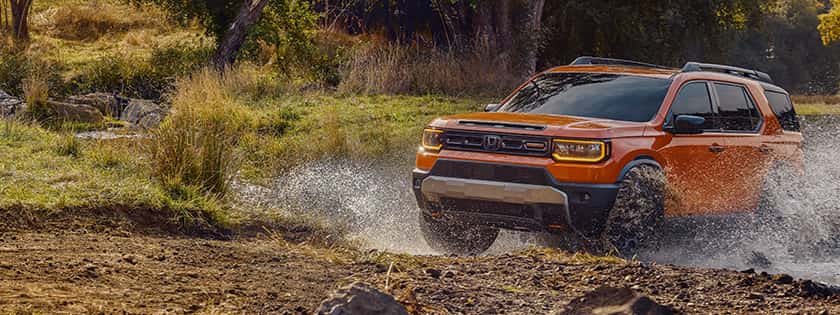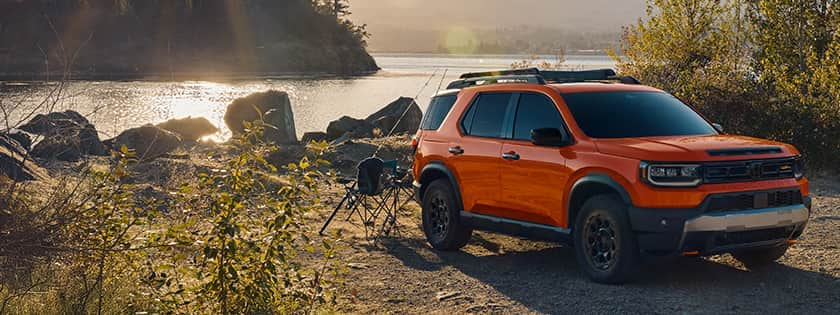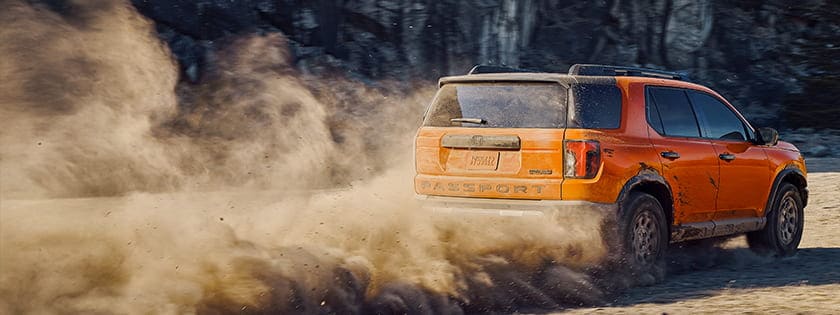Here are some sobering statistics for parents: Motor vehicle crashes kill more children ages 14 and under than anything else, claiming nearly 2,400 lives and resulting in approximately 270,000 injuries each year. The vast majority of those crashes occur within 25 miles of home, and most occur on roads with posted speed limits of 40 mph or less.
Sitting Tight: A Car Seat Overview
It's frightening. Why are all these kids dying? For the most part, it's because they aren't buckled safely into the car. For those of you thinking, "Hey, I put my kids in car seats," here's news: Studies show that 82 percent of those seats are not installed and used correctly. That's why, in 2001, the federal government required passenger vehicles and child restraints to feature LATCH (Lower Anchors and Tethers for Children). LATCH, which eliminates the need to use the car's seatbelt to hold down the car seat, was designed to standardize installation and reduce guesswork. (Note that the LATCH requirement only applies to vehicles with a gross vehicle weight rating, GVWR, under 8,500 pounds. Some manufacturers, such as Ford and General Motors, have voluntarily installed LATCH on many of its full-size trucks and vans. All child restraints are required to feature LATCH except car beds and boosters.)
A LATCH-compliant vehicle has metal "anchors," usually located on the seat back or rear bulkhead, to hold the safety seat's upper tether. It also has lower "anchor points" in the seat crack — the place where cookie crumbs usually hide — to receive the metal LATCH connectors built into the lower part of car seats.
See Edmunds pricing data
Has Your Car's Value Changed?
Used car values are constantly changing. Edmunds lets you track your vehicle's value over time so you can decide when to sell or trade in.

Simpler, But Still Not Easy
In spite of the LATCH system requirement, choosing a car seat can still be a confounding experience. People still complain about how difficult it is to ensure that they buy a car seat that fits their vehicle. The owner's manual may say one thing, but the car seat instructions may say another. And many SUVs and wagons have anchor points that are located in the cargo bay, making installation more difficult and potentially interfering with cargo storage.
An added difficulty arises for parents who carpool or who have more than two kids. The outboard vehicle seats (window seats) are wider than the middle seat, and the middle seat often isn't LATCH-compliant. Trying to fit three car seats (even backless boosters) across a rear seat can be a challenge, and often impossible. Further, the car seats that fit into one car may not fit into another.
To complicate matters, the widths of car seats vary by make and model, and can change over time. The right place to go for information about specific model width is the child seat manufacturer.
Lorrie Walker is training manager and technical advisor for Safe Kids Buckle Up, a non-profit education, outreach and public policy program and part of the national Safe Kids campaign (www.safekids.org). She says LATCH is not as simple as it sounds. "All in all there are still variations between cars and child restraints that make it difficult to use," she says. "It is still working the kinks out."
Turns out that what was supposed to make our lives easier and safer has also created a new set of problems.
"In America, we have a lot of choices," says Walker. "Each manufacturer can make [LATCH] look whatever way they choose." That means more choices — and more confusion — for consumers.
The National Highway Traffic Safety Administration initiated a study in spring 2005 to examine the use and misuse of the LATCH system. This study found that many people are unaware of the upper tethers available with LATCH, as well as their importance, and found that some people don't use LATCH because they are unaware of its existence or feel uncomfortable with learning a new method of securing a child's safety seat. The study also found that LATCH's accessibility in different cars varies greatly, and that tethers are not available in the middle seat of a car (the safest place for a car seat), resulting in misuses of the LATCH system.
Rest assured that older car seats that do not feature the LATCH system are still legal to use with the vehicle's seatbelts and are perfectly safe if installed properly.
States of Confusion
Though federal regulation has helped to protect the nation's children, each of the 50 states and the District of Columbia has its own set of "child occupant protection" laws. The laws vary widely in age requirements, seating positions, exemptions, enforcement and penalties. If you're caught with your child improperly restrained in one state, you might face a stiff fine, but in another state you'd get the proverbial slap on the wrist.
State laws have generally been regarded as weak, but thanks to programs like Safe Kids, they are improving. About half of the states have strengthened their laws to require some older children to ride in booster seats. Some states now require car rental agencies to provide customers with car seats. Others require a public fund and educational campaign to promote child passenger safety.
California has, by far, the best vehicle child protection laws in the country. It requires all children age 15 and under to be restrained in some manner. Children ages five and under and weighing less than 60 pounds must be in an appropriate child safety seat in the back of the car.Children older than five who have outgrown their safety seats, but are still too small for a regular safety belts, are required to use a booster seat. However, this law only applies to six-year-olds, while pediatricians and child safety advocates strongly recommend booster seat use by children as old as eight.
To find out the regulations in your state, go to http://www.safekids.org and select your state from the drop-down box on the right.
Dos and Don'ts
Because state regulations vary so widely, it's smart to go above the letter of the law and implement "best practices."
The most important thing to remember is, do read the manuals — both the owner's and the car seat manufacturer's. Otherwise you could end up attaching your car seat's tether to a cargo hook instead of a LATCH anchor. It happens all the time, and it doesn't protect Junior in an accident.
"People pull out the owner's manual when they want to learn how to use the radio, but when it comes to occupant protection, they don't read it," says Walker. Understanding how to adjust something as simple as the shoulder belt — with the touch of a button — can make the rider both more comfortable and safer.
If you're not sure if your car seat is installed correctly, have it inspected. Most people who work at baby product stores are not specifically qualified to install your car seat. You can find folks who are trained to do it right the first time by going to a Child Safety Seat Inspection Station, or calling your local Safe Kids coalition.
Do take your kids and their car seats with you to the dealership when you're auditioning new family cars. Is there enough clearance for rear-facing seats in the backseat? This might be an issue if you're buying a compact car. And is there enough legroom for older kids in front-facing seats, or will they always be kicking the back of your seat? Does each safety seat fit securely on the seat bottom cushion or is it likely to wiggle around?
Next is, don't put your kids in the front seat. Since the most common type of crash is frontal, the rear seat is the safest place for children to ride. A study by the Insurance Institute of Highway Safety (IIHS) showed that children under 13 are up to 36-percent less likely to die if they are seated in the rear seat. Despite this, an estimated one-third of children ride improperly restrained in the front seat. Front airbags don't protect children, either, because they were designed for adults. According to the National Safe Kids Campaign, 164 children have been killed by passenger airbags since 1990. The federal government now requires auto manufacturers to begin phasing in "advanced," or third-generation, airbags that deactivate if the front passenger is too light. But this is intended more to protect smaller adults. So don't give in to the whining of your "I'm too big to sit in the back" kid.
Mercedes-Benz has tried to get around the airbag problem by developing its BabySmart system. It allows parents to place a BabySmart-compatible car seat on the front passenger seat. When used properly, the BabySmart system automatically deactivates the front airbag. This may sound convenient, but airbag or no, the overall risk of injury is greater in the front seat. The only time it makes sense to use the front seat is when you have no other choice — such as in a two-seater like Mercedes' SLK convertible. But then, shouldn't you consider getting a "family car" to transport the kids?
Of course, there will always be questions that don't have simple answers, like, "What about side airbags?" and, "What's the safest place in the backseat for two children of different ages to ride?" For these answers and more, go to Safe Kids for frequently asked questions about car seats.
Design Trends
NHTSA has responded to the difficulty of car seat installation by rating car seats for ease of use. Thanks to this rating system, car seat manufacturers are now focusing on simplifying instructions, assembly and labeling.
Car seat manufacturers are also trying to win points with consumers in a post-LATCH world by innovating in smaller, yet noticeable ways, largely in the area of seat pads. Industry-leader Graco, for example, has developed seat pads that reverse for warm and cold weather and a "memory" foam pad, reminiscent of Tempurpedic and other NASA-inspired mattresses, that conforms to the body. And in order to help convince older kids to use booster seats, Graco's TurboBooster's seat pad now comes in a variety of styles and colors, some gender specific and with licensed characters.
For the parents, many of Graco's seat pads can be replaced if your child (or children) outlasts the pad. The ComfortSport convertible car seats now have a seat pad that can easily be removed for washing without having to rethread the harness system (hurrah!).
In the end, there are many places to find guides to choosing and using car seats, but one of the best is the Web site of the American Academy of Pediatrics (AAP). There you'll find a comprehensive guide to using car safety seats and a list of new child seats by manufacturer and model. Take the time to read it. In addition to a few "aha!" moments, you'll have the satisfaction of knowing that everyone is properly restrained when you're behind the wheel.



